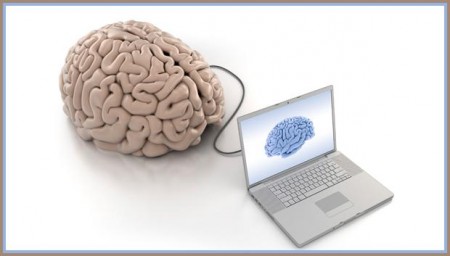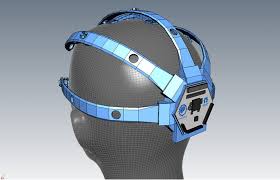November 24, 2015 – The most recent mind sharing from Peter Diamandis is truly about the mind and how technology interacts with it today and what’s coming down the pipe. It’s, how we say, mind boggling. Let me know through comments what’s on your mind.
———-
Over the past few decades, billions of dollars have been poured into three areas of research: neuroprosthetics, brain-computer interfaces and optogenetics. All three areas of research are already transforming humanity and solving many of the problems that seem to have stumped our natural evolutionary processes.
Neuroprosthetics, Brain-Computer Interfaces, and Optogenetics
Your brain is composed of 100 billion cells called neurons. These cells make you who you are and control everything you do, think and feel. In combination with your sensory organs these systems shape how you perceive the world. And sometimes, they can fail.
That’s where neuroprosthetics come into the picture. The term neuroprosthetics describes the use of electronic devices to replace the functions of an impaired nervous system or sensory organ. Devices that do this have been around for a while. The first cochlear implant was put in a patient in 1957 to help restore hearing. Since then, over 350,000 have been implanted around the world, dramatically improving the quality of life for those individuals suffering from deafness.
But cochlear implants only hint at a very exciting field that researchers call the brain-computer interface, or BCI, the direct communication pathway between our brain and central nervous system (CNS) and external computing devices. The vision for BCI involves interfacing our digital world with the CNS for the purpose of augmenting or repairing human cognition. How we accomplish this interface is what makes the field so interesting.
There are two approaches. The first is physically connecting wires and neurons with microscopic arrays of metallic pins that stick into the brain and electrically stimulate neurons and/or measure the neuron’s electric potential when they fire. The second, and far more interesting, approach is through optogenetics, controlling neurons with light. Using a light-sensitive molecule inserted into the cell surface of a neuron (usually through a virus vector), a neuron’s behavior can be triggered or inhibited when exposed to light pulses at a specific frequency.
These are early days for BCI. To get you thinking about possibilities, here are a few of my favorite applications describing what we can do today.
What We Can Do Today
- Seeing: About 70 blind people have undergone the 3-hour surgery for what’s called a retinal implant. As described, “a spectacle-mounted camera captures image data; that data is then processed by a mini-computer carried on a strap and sent to a neuron-stimulating array of 60 electrodes implanted on the retina.” While still a long way from completely restoring vision, the notion that we can use cameras to augment or replace lost photo receptors is promising.
- Hearing: As I mentioned earlier, around 350,000 cochlear implants have been implanted in hard-of-hearing individuals over the last 60 years. A microphone picks up sound from the environment, sends it to a speech processor, and then a transmitter converts it into electric impulses. An electrode array sends these impulses to different regions of the auditory nerve, allowing us to bypass the malfunctioning parts of the ear all together.
- Feeling Pain: Various companies and research groups including Stanford University are exploring how to use optogenetics to “turn off” the perception of chronic pain simply by pressing a bright flashlight to a patient’s skin. Pain is the primary reason people see doctors, accounting for $635 billion in medical bills per year.
- Movement/Intention: Fifteen to 20 paralyzed patients have received implants into the motor cortex of the brain, responsible for movement. This is allowing them to control external robotic arms or, even more amazingly, reanimate their paralyzed limb through communication with electrodes implanted within it.
- Hunger: Like pain, hunger is a sensation. Stanford researchers are exploring how to use optogenetics to curb the sensation of hunger by regulating stimuli from the vagus nerve.
- Memory: A researcher at University of Southern California is developing a way to restore memory using an implanted computer chip in the hippocampus.
- Anxiety: Karl Deisseroth and collaborators at Stanford University “identified a specific circuit in the amygdala, a part of the brain that is central to fear, aggression, and other basic emotions, that appears to regulate anxiety in rodents.” With optogenetics, we could soon be able to turn this circuit switch to the off position.
What We Will Do in the Future
Where are we going with this? It’s truly mind-blowing. As neuroscientist David Eagleman recently pointed out at a TED talk, our experience of reality is constrained by our biology. This, however, doesn’t have to be the case as we develop new ways to send novel inputs or computational capabilities into the brain. For example we may be able to add new senses to those we naturally have. Imagine being able to “plug in” to the stock market to sense how it is doing. Imagine wireless, brain-to-brain communication, something we call synthetic telepathy, and having the ability to send messages to each other by thinking them.
Our brains are a platform and the opportunities for new applications are almost endless. These applications will challenge what it means to be human. And once we, as Ray Kurzweil predicts, connect our neocortex to the cloud, perhaps we’ll become something far more than “human” together.


















[…] behavior can be triggered or inhibited when exposed to light pulses at a specific frequency. [37] Melatonin receptors have been identified in various ocular cell types, including photoreceptors, […]
[…] 36. (5) Peter Diamandis talks brain-computer interfaces present and future. […]